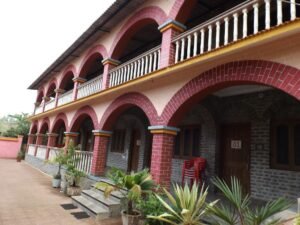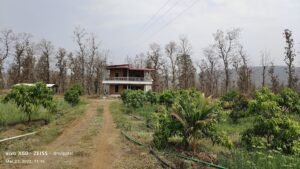In the last decade, India has seen an encouraging surge in rural tourism with homestay. But along with this trend comes an alarming undercurrent — the silent invasion of concrete hotels and commercial resorts into our most pristine villages. Places that were once alive with the hum of bullock carts, wood-fired kitchens, and birdsong are slowly being paved over to suit the aesthetics of Instagram and luxury-seeking weekenders.
But there’s a quieter, more powerful movement rising — homestays. And they may be our best bet to save villages from becoming the next concrete jungle.
Table of Contents
🧱 The Hidden Cost of Hotels in Villages
Let’s look at what happens when large hotels enter rural areas:
- ❌ Land Displacement: Traditional farmers sell ancestral land for short-term profit, losing long-term livelihood.
- ❌ Cultural Erosion: Standardized hospitality replaces local flavors, languages, and traditions.
- ❌ Environmental Stress: Resorts often lead to groundwater depletion, increased plastic waste, and deforestation.
- ❌ Economic Leakages: Hotel profits often go to outside investors, not the local economy.
According to a 2023 report by TERI, unregulated construction in eco-sensitive zones has led to a 42% increase in soil erosion and 36% depletion in native biodiversity in tourist-heavy hill areas.
✅ The Homestay Alternative: Nature-Inspired & Community-Rooted
Homestays, when done right, serve as the perfect model of regenerative tourism. Here’s why:
- 🌿 Built With the Earth: Most homestays use existing village homes or eco-materials like mud, bamboo, and stone — preserving local architectural heritage.
- 👨👩👧👦 Family-Run: Guests stay with locals, not under a corporate logo. The income stays within the community.
- 🍛 Local Food & Traditions: Every meal is a culinary journey — from millet rotis to hand-pounded chutneys — made with organic, home-grown ingredients.
- 🧘♀️ Low Carbon, High Connection: No need for infinity pools or air-conditioned lobbies. The forest breeze, starlit skies, and mountain silence do the healing.
In pilot programs across Gujarat and Madhya Pradesh, villages hosting 5–10 homestays saw a 27% increase in local income without a single cement hotel being built.
📉 A Simple Formula: More Homestays = Less Need for Hotels
Imagine a tourist hotspot with 10 nearby villages, each with just 4–6 homestays. That’s nearly 300+ beds available in eco-friendly, culturally authentic settings — enough to accommodate a moderate tourism flow without the need for concrete resorts.
More importantly, these beds generate income for 100+ local families, from cooks and guides to artisans and farmers supplying the food.
🌎 Global Case Studies Say the Same
- 🇳🇵 In Nepal’s Annapurna region, community-managed homestays helped preserve sacred forests and generated more than $1.5M/year in village tourism.
- 🇨🇷 In Costa Rica, eco-homestays outperformed resorts in customer satisfaction scores by 22% while costing 40% less to operate.
India has the same potential — if we protect it.
🚫 Don’t Let Our Villages Become the Next Manali or Lonavala
Unchecked hotel development has turned once-serene towns into traffic-clogged concrete corridors. Let’s not let that happen to the untouched tribal belts of Dang, the peaceful hills of Saputara, or the other forest villages of India.
Homestays offer a low-cost, high-value, high-impact alternative that keeps both nature and culture intact.

🛖 The Call to Action
- 📢 Policymakers: Offer incentives and micro-loans for village homestays instead of commercial hotel chains.
- 💡 Travelers: Choose meaningful stays over manicured experiences. Your choices shape the future of tourism.
- 🛠 Platform Builders: Like VanGhar, continue to spotlight and support local homestay entrepreneurs through tech and storytelling.
In conclusion, homestays aren’t just rooms for rent. They are the frontlines of environmental conservation, rural economic justice, and cultural continuity.
Let’s build a future where tourism doesn’t flatten our villages — it elevates them. 🌱




